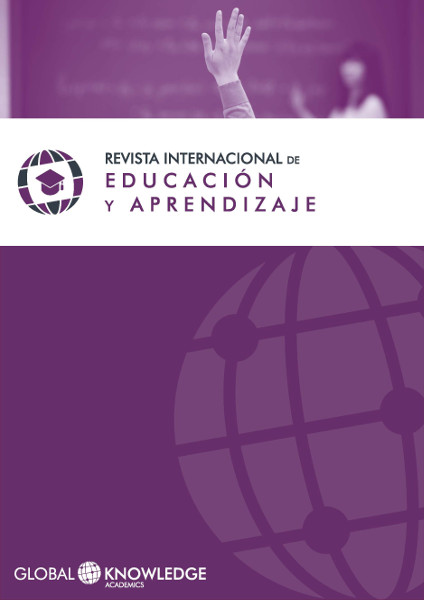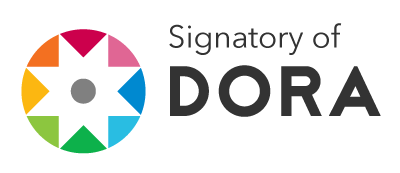Social and disciplinary demands to university learning for the XXI century. Representation from knowledge engineering point of view
DOI:
https://doi.org/10.37467/gka-revedu.v6.1451Keywords:
Practical learning, Employability, Training programs, Internationalisation, Sand TableAbstract
Socioeconomic changes have been noticing in all society sectors affecting university education and the possibility to escape from them is rare. At the beginning of the 21st century, formation researchers have questioned the gap development between education and job, showing competencies weakness. We perform an example of strategic planning with two specific objectives: graduate and post-graduate teaching improvement and critical knowledge development. Under these objectives, professors who are the responsible of the one most important professional opportunity from environmental engineering, have developed a set of activities and initiatives.
Downloads
Global Statistics ℹ️
|
511
Views
|
105
Downloads
|
|
616
Total
|
|
References
Drake, F. (Ed.). (2009). La Educación Forestal en América Latina. Realidad y Desafíos para la Formación Profesional del siglo XXI. Organización de las Naciones Unidad para la Agricultura y Alimentación-Universidad de Concepción (Chile). Concepción, Chile, 347 pp.
Finney, M.A. (2004). FARSITE: Fire Area Simulator-model development and evaluation. RMRS4-RP4 Re-vised. USDA Forest Service, USA, 47 pp.
Herrera, M.A., Rodríguez y Silva, F., Molina, J.R. and Moreno N. (2009). Nuevos paradigmas en la gestión forestal sostenible. Universidad de Córdoba-Agencia Española de Cooperación Internacional para el Desarrollo. Córdoba, España.
Junta de Andalucía. (2013). Ecobarómetro de Andalucía. Los Andaluces y el medio ambiente. Consejería de Medio Ambiente, Junta de Andalucía. Sevilla, España.
Li, H. and Love P.E.D. (1998). Use of Virtual Simulation in Construction Technology Education. Computer Applications in Engineering Education 6(4): 217-222. DOI: https://doi.org/10.1002/(SICI)1099-0542(1998)6:4<217::AID-CAE1>3.0.CO;2-B
Malm, J., Bryngfors, L. and Mörner, L-L. (2016). The potential of supplementary instruction in engineering education: creating additional peer-guided learning opportunities in difficult compulsory courses for first year students. European Journal of Engineering Education 41(5), 548-561. DOI: https://doi.org/10.1080/03043797.2015.1107872
Molina J.R., Herrera M.A. and Rodríguez y Silva F. (2017). The potential of digital sand-table use in engi-neering education: towards a development of future forest engineers. Journal of Engineering Edu-cation (In Press).
National Centre for Patership and Performance. 2005. Working to our Advantage A National Workplace Strategy. Execute Summary. NAtional Workplace Strategy, Ireland, 20 pp.
Redel-Macías, M.D., Castillo, C., Aguilar, C. , Polo, M. and Taguas, E. (2014). Development of a virtual tool for learning basic organisation and planning in rural engineering projects. European Journal of Engineering Education 39(5), 507-517. DOI: https://doi.org/10.1080/03043797.2013.811473
Rodríguez y Silva, F., Molina, J.R. and Carmona, J.F. (2010). Manual Técnico de Aplicaciones Informáticas para la Defensa contra Incendios Forestales. Servicio de Publicaciones Forestales. MANPAI XXI, Córdoba.
Sample, A., Ringgold, P., Block, N. and Giltmier, J. (1999). Forestry Education: Adaptation to the Changing Demands on Professionals. Journal of Forest 97(9), 4-10.
Vanclay, J. (2007). Educating Australian foresters for the 21st century. International Forestry Review 9(4), 884-891. DOI: https://doi.org/10.1505/ifor.9.4.884
Downloads
Published
How to Cite
Issue
Section
License
Those authors who publish in this journal accept the following terms:
-
Authors retain copyright.
-
Authors transfer to the journal the right of first publication. The journal also owns the publishing rights.
-
All published contents are governed by an Attribution-NoDerivatives 4.0 International License.
Access the informative version and legal text of the license. By virtue of this, third parties are allowed to use what is published as long as they mention the authorship of the work and the first publication in this journal. If you transform the material, you may not distribute the modified work. -
Authors may make other independent and additional contractual arrangements for non-exclusive distribution of the version of the article published in this journal (e.g., inclusion in an institutional repository or publication in a book) as long as they clearly indicate that the work was first published in this journal.
- Authors are allowed and recommended to publish their work on the Internet (for example on institutional and personal websites), following the publication of, and referencing the journal, as this could lead to constructive exchanges and a more extensive and quick circulation of published works (see The Effect of Open Access).













